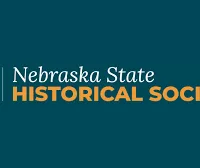
Lincoln, NE – 04/02/2025 – Nebraskans’ stories about Jim-Crow era travel in the United States are needed for a two-year project to tell the story of this lesser-known Nebraska history.
The Nebraska State Historical Society, and project partners, the Durham Museum, Great Plains Black History Museum, and the Making Invisible Histories Visible program developed by Omaha Public Schools, are reaching out to Nebraskans for their stories associated with Black American travel across the state in the 1950s and 1960s.
During the Jim Crow segregationist era, Victor Hugo Green, a New York City mailman, began publishing the Green Book to help Black American and international travelers find safe lodging, restaurants, gas stations, and other various businesses throughout North America until 1967. Due to urban renewal, natural disasters, and shifting land uses, many Green Book sites have been lost.
“The goal is to increase awareness about Nebraska’s Green Book sites, Black history throughout the state, and reasons to preserve and celebrate it,” said Jade Mendoza, Survey Coordinator in the State Historic Preservation Office, a division of the Nebraska State Historical Society. “We need Nebraskans’ memories and stories about Black American travel in the state to help us tell this lesser-known Nebraska history. If you have memories of visiting Green Book sites in Nebraska or recall hearing older relatives tell stories about them, please e-mail me at jade.mendoza@nebraska.gov, or call me at 402-429-7465,” Mendoza continued.
Stories also can be submitted using the Nebraska Green Book Stories Submission form on the Nebraska State Historical Society website at https://history.nebraska.gov/historic-preservation/nebraska-green-book/share-to-nebraska-green-book-project to submit your stories.
Once research and site visits are completed, two Green Book sites will be nominated to be placed on the National Register of Historic Places. The Nebraska State Historic Preservation Office uses historic survey work like this with the National Register to recognize our nation’s historic places, understand potential impacts to historic places and to unlock access to preservation based economic development programs.






